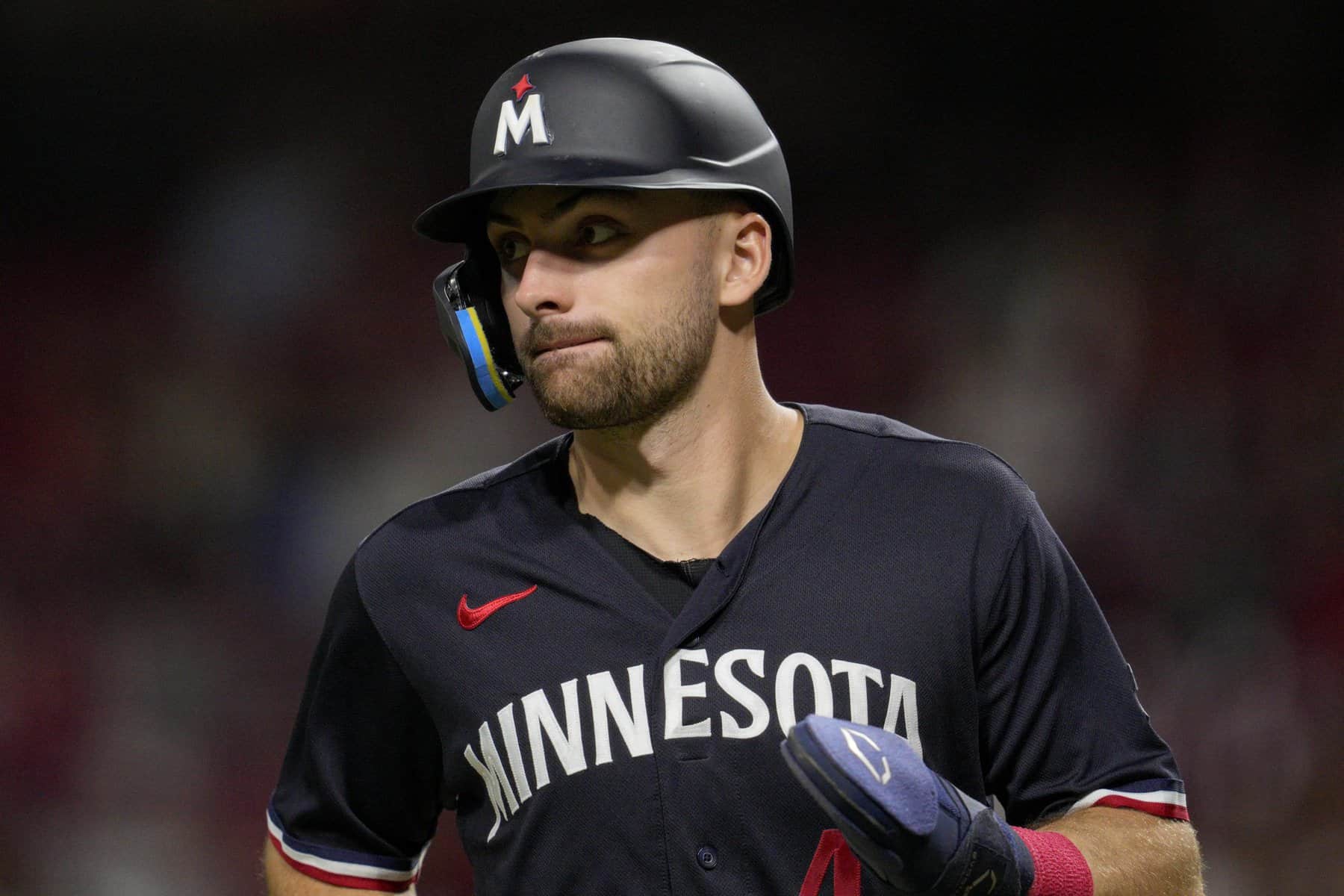Every year, Pro Bowl NFL DFS contests are among the softest action you’ll find because, for whatever reason, DFSers don’t bother to put in the research needed to find out where the advantages and pitfalls lie. Would you have guessed, for example, that defenses were found in three of the last four winning Pro Bowl lineups? And that not one running back has had over seven PPR points since 2017? Eventually, players will catch up and that may already be happening, but by following a few simple guidelines and rules, you can create a massive edge over your competition this Sunday.
Of course, this year, unlike years past, our data team has put together NFL DFS projections for the Pro Bowl, making a lot of this guesswork and analysis moot if you’re a premium member.
First off, let’s take a look at the top-seven scorers from each of the last four years (PPR format).
2020 Pro Bowl Top Seven Scorers
- Davante Adams, NFC WR (6-60-2)
- Michael Thomas, NFC WR (5-92-1)
- Mark Andrews, AFC TE (9-71-1)
- Lamar Jackson, AFC QB (185 yards passing, 2 TDs, 1 INT)
- Kirk Cousins, NFC QB (180 yards passing, 2 TDs, 1 INT
- DJ Chark, AFC WR (2-67-1)
- Jack Doyle, AFC TE (3-63-1)
2019 Pro Bowl Top Seven Scorers
- AFC DST (seven sacks, three interceptions, seven points allowed)
- Anthony Sherman, AFC FB (101 yards, touchdown)
- Keenan Allen, AFC QB (4-95-0)
- Patrick Mahomes, AFC QB (156 yards passing, one touchdown)
- Jared Cook, AFC TE (3-71-0)
- Deshaun Watson, AFC QB (128 yards passing, one touchdown)
- Tie: George Kittle, NFC TE (5-40)
2018 Pro Bowl Top Seven Scorers
- Delanie Walker, AFC TE (4-29-2)
- TY Hilton, AFC WR (4-98)
- Kyle Rudolph, NFC TE (7-70)
- NFC DST (one touchdown, two interceptions, one fumble)
- Adam Thielen, NFC WR (3-25-1)
- Graham Gano, NFC kicker (three field goals, two extra points)
- Alex Smith, AFC QB (131 yards passing, touchdown)
2017 Pro Bowl Top Seven Scorers
- Doug Baldwin, NFC WR (3-67-1)
- Odell Beckham Jr, NFC WR (6-93)
- NFC defense (one interception, seven sacks, one fumble, 20 points allowed)
- T.Y. Hilton, AFC WR (5-58)
- Drew Brees, NFC QB (112 yards passing, touchdown, interception)
- Travis Kelce, AFC TE (3-36-1)
- Delanie Walker, AFC TE (3-35-1)
Quick NFL DFS Takeaways, Trends
- Tight ends account for eight of the top 28 scorers.
- Running Backs account for zero of the top 28 scorers.
- DST appear in four of five years studied.
- 5-1 stacking is often underused on showdown slates relative to its win rate.
- There is a quarterback in every winning lineup, but only one made the top four scorers.
Quick Crunching Rules
- 1-2 TEs on every roster. Safe with upside
- At least one DST per lineup
- A TE or WR in the CPT spot
- 1-2 QBs in FLEX spots
- FBs are viable, but probably not in captain spots. Mix them in
- Cross off all running backs
Creative Crunching
- 5-1 stacks
- DST in captain spot
- Rostering kickers
Latest NFL DFS Content
- Want to Learn How to Win a DraftKings Milly Maker With Stokastic Sims? Steve Buzzard Will Tell You How
- PrizePicks, Sleeper & Underdog Cheat Sheet: Best More/Less Picks Today for NFL (February 11)
- DraftKings NFL Cheat Sheet: Super Bowl Sims Picks | George Kittle
- NFL Super Bowl 58 DFS Picks: 49ers vs. Chiefs (February 11)
- NFL DFS Captain Picks for Super Bowl 58: Rashee Rice, George Kittle & More
- Stokastic DFS on Youtube
NFL DFS Pro Bowl Lineup Building Rules for the 2022 Pro Bowl
Rule No. 1: Roster Tight Ends
Every year, DFSers overlook the tight end position in their Pro Bowl lineups, and every year, it’s one of the best edges you’ll find. Because the offense must have a tight end in every formation, that means these guys are seeing 50-70% snap rates, which is higher than any offensive skill position in the game. In 2020 we had the ad
Rule No. 2: Don’t Roster Running Backs
Since 2017, Jay Ajayi leads all Pro-Bowl running backs with seven carries in one game. Ezekiel Elliott leads in yardage after tallying 33 yards on three carries in 2019. Continually though, these running backs are rostered at high rates. Teams just don’t run the ball that much in Pro Bowls and there are a lot of mouths to feed. Target passing attacks and maybe the odd pass-catching back.
Rule No. 3: Take Fliers on Fullback, But Don’t Go Overboard
Coaches love rewarding these guys for all their had work all season, so they scheme to get them the ball. Over the past three Pro Bowls, Anthony Sherman and Kyle Juszczyk were standouts at low prices and with little ownership. Like running backs, they come with a lot of risk and limited upside. But unlike running backs, the don’t get any ownership and they’re cheap, so they’re a great way to differentiate your lineups in large GPPs.
Rule No. 4: Quarterbacks are Safe, But Don’t Go Overboard
Over the last three Pro Bowls we haven’t seen a single passer go for more than 150 yards and one touchdown, but in each game there are usually two or three quarterbacks with at least 100 yards and a touchdown. Quite often the ones that manage to throw for a touchdown fall in the 2-6 range of top scorers, so they should appear on winning lineups.
Another note: Since 2017, the starting quarterbacks have gotten less run than the second and third stringers.
Rule No. 5: Quarterbacks Don’t Run, So Downgrade Run-First Options
Since 2017, quarterbacks have combined to rush the ball for three total yards in Pro Bowls. Even ones known for using their legs don’t take unnecessary risks. Even Lamar Jackson didn’t run last year, and he’s questionable this year.
Rule No. 6: You Don’t Spend to the Cap
These games are crapshoots and there really isn’t any projection difference between a $5,000 Kirk Cousins and a $10,000 Lamar Jackson. Tight ends are cheap, as are kickers and defenses and they frequent the top of the leaderboard. Don’t just fill in Michael Thomas because you have the cap space.
Rule #6: Roster Defenses and Kickers
As you saw at the top, at least one defense has appeared in the top lineups each of the past three years, yet defenses continue to go under-owned. Make a rule to include one in every lineup. As well, there’s only been one kicker up at the top recently, but a few have come close.
Rule Change: The Make it Take it Rule
Courtesy of NFL.com
The 2022 Pro Bowl will again featuring a pair of recent rule changes. Following a successful field goal or try attempt, the scoring team can either give Team B the ball at Team B’s 25-yard line in a first-and-10 situation, or Team A can keep the ball at its own 25-yard line and face fourth-and-15.
Moreover, a 35/25 second play clock will be used instead of the normal 40/25 second clock. Following an incomplete pass, the game clock will start on the referee’s signal outside of the last two minutes of the first half and the last five minutes of the second half.
Thanks for reading to the end of this article! If you appreciate this free content and want to see more of it every day, you can help us out by sharing this article on social media!
[NFLPAGE]















